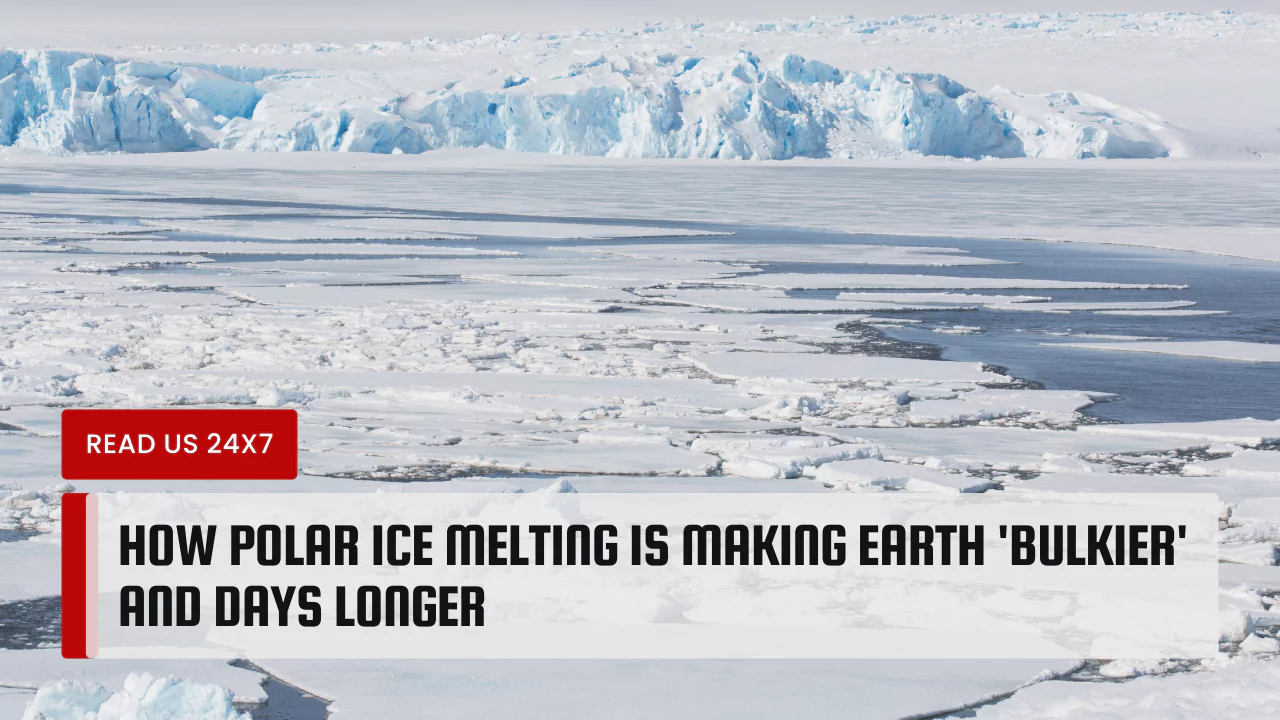The melting of polar ice caps, particularly in Greenland and Antarctica, is gradually affecting Earth’s rotational dynamics, leading to longer days. This significant environmental change is not only altering the physical structure of our planet but also has significant implications for various natural phenomena.
Effects of Polar Ice Melt on Earth’s Rotation Dynamics
Lengthening of Days Due to Melting Ice
As the ice in polar regions melts, the resulting water flows into the world’s oceans, especially in equatorial areas. This influx of water near the equator is causing the oceans to swell, subsequently affecting the speed at which Earth rotates. The redistribution of mass due to melting ice is causing Earth to spin more slowly, ultimately leading to longer days. This minuscule delay in the Earth’s rotation could have implications for global time-keeping, digital infrastructure, and the precision of GPS satellites orbiting the planet.
How Earth’s Increased ‘Bulk’ Alters Rotation
The influx of water from melting polar ice caps is contributing to a shift in mass on the planet. This shift is affecting Earth’s rotational speed, analogous to a figure skater extending their arms during a spin. As mass moves away from the axis of rotation, the planet’s physical inertia increases, resulting in a gradual slowdown in rotation.
Shift in Earth’s Spin Axis from Ice Loss
Recent research indicates that the melting of polar ice is also causing a shift in Earth’s spin axis. The axis of rotation, where Earth’s rotational force meets its surface, is gradually moving, altering the planet’s dynamics. This gradual shift in the spin axis is a direct consequence of the changing mass distribution due to the melting of polar ice.
Scientific Analysis of Ice Melt and Day Lengthening
Correlation Between Polar Ice Melt and Extended Days
The correlation between the melting of polar ice and the lengthening of days is a subject of scientific study. The gravitational pull of the moon contributes to the tidal braking of Earth’s rotation, leading to a natural process where days slowly lengthen. However, the impact of climate change-induced polar ice melt is exacerbating this phenomenon, resulting in a more pronounced lengthening of days. The gradual increase in the length of a day by 2.3 milliseconds per century, attributed to the moon’s tidal forces, is now being augmented by the additional impact of climate change.
Influence of Global Warming on Earth’s Rotational Patterns
Global warming, a significant driver of polar ice melt, is influencing Earth’s rotational patterns. The feedback from the conservation of angular momentum due to the redistribution of mass caused by climate change is leading to notable changes in the dynamics of Earth’s rotation. This demonstrates the substantial impact that human-induced climate change is having on the fundamental behavior of our planet.
Implications of a Slower Rotating Earth
Potential Slowdown in Earth’s Rotational Speed
The gradual slowing down of Earth’s rotation due to polar ice melt has far-reaching implications. While the current increase in the length of a day is relatively minor, continued melting of polar ice could lead to a more significant slowdown in Earth’s rotational speed. This has implications for various human activities, including timekeeping, global navigation systems, and even space travel.
Adjustments in Seasons and Climate Patterns
A slower rotating Earth could also result in adjustments to seasons and climate patterns. The altered rotational dynamics, coupled with the redistribution of mass caused by ice melt, has the potential to influence weather patterns and climatic conditions worldwide. This could lead to shifts in precipitation patterns, temperature variations, and other climatic phenomena that directly impact ecosystems and human societies.
Effects on Ocean Currents and Global Weather Systems
The slowdown in Earth’s rotational speed and the consequent alterations in mass distribution can also impact ocean currents and global weather systems. Changes in the speed of Earth’s rotation can influence the behavior of oceanic currents, which play a vital role in regulating global climate patterns. Additionally, variations in the planet’s rotational dynamics can potentially influence atmospheric circulation, affecting weather systems on a global scale.
In conclusion, the ongoing melting of polar ice is not only causing Earth to become “bulkier” due to the redistribution of mass but is also leading to longer days. As the planet’s rotational dynamics are gradually influenced by the effects of climate change, it is essential to recognize the far-reaching implications of these environmental transformations. The increasing length of days, potential alterations in seasons and climate patterns, and the impact on oceanic and atmospheric systems underscore the interconnectedness of Earth’s complex natural processes.



